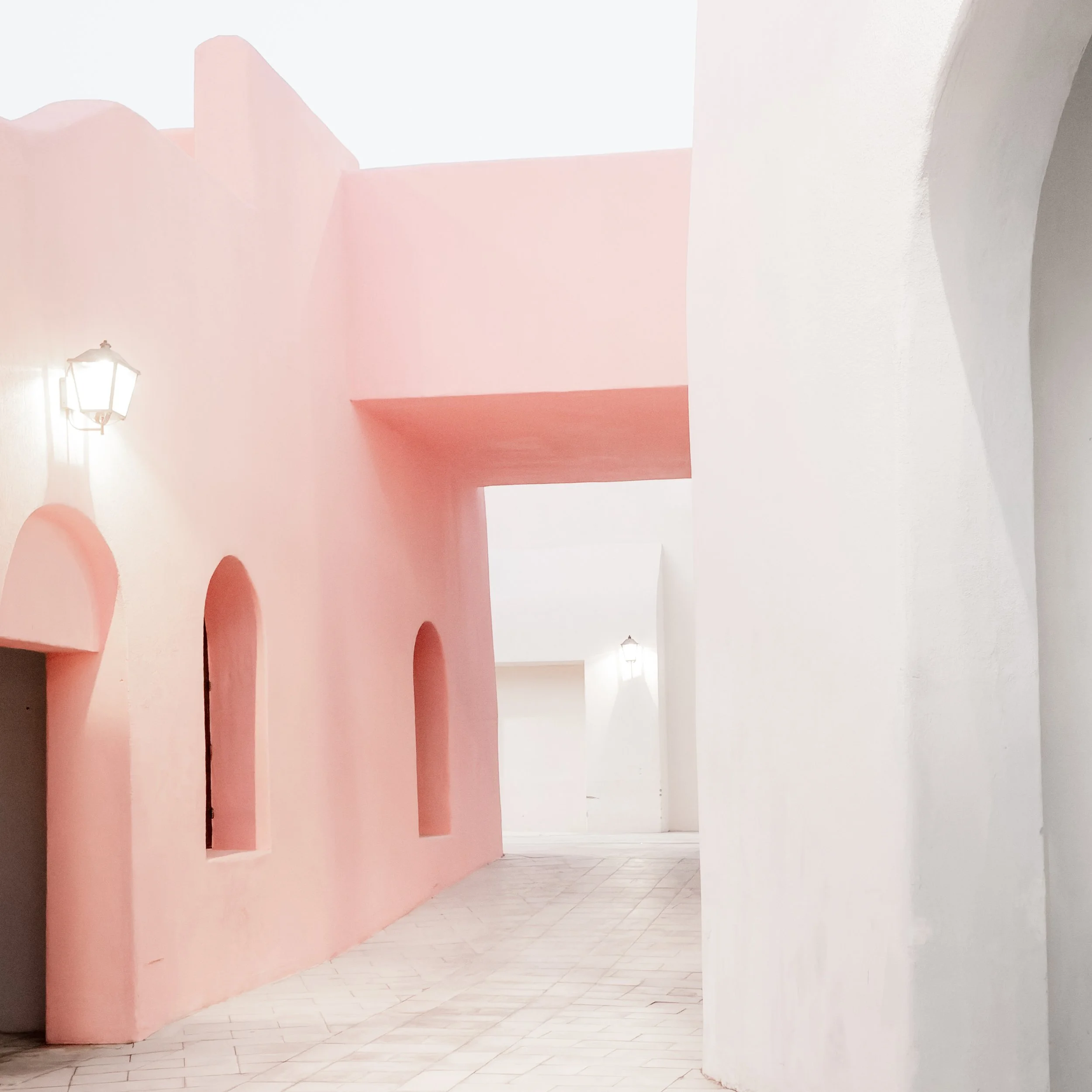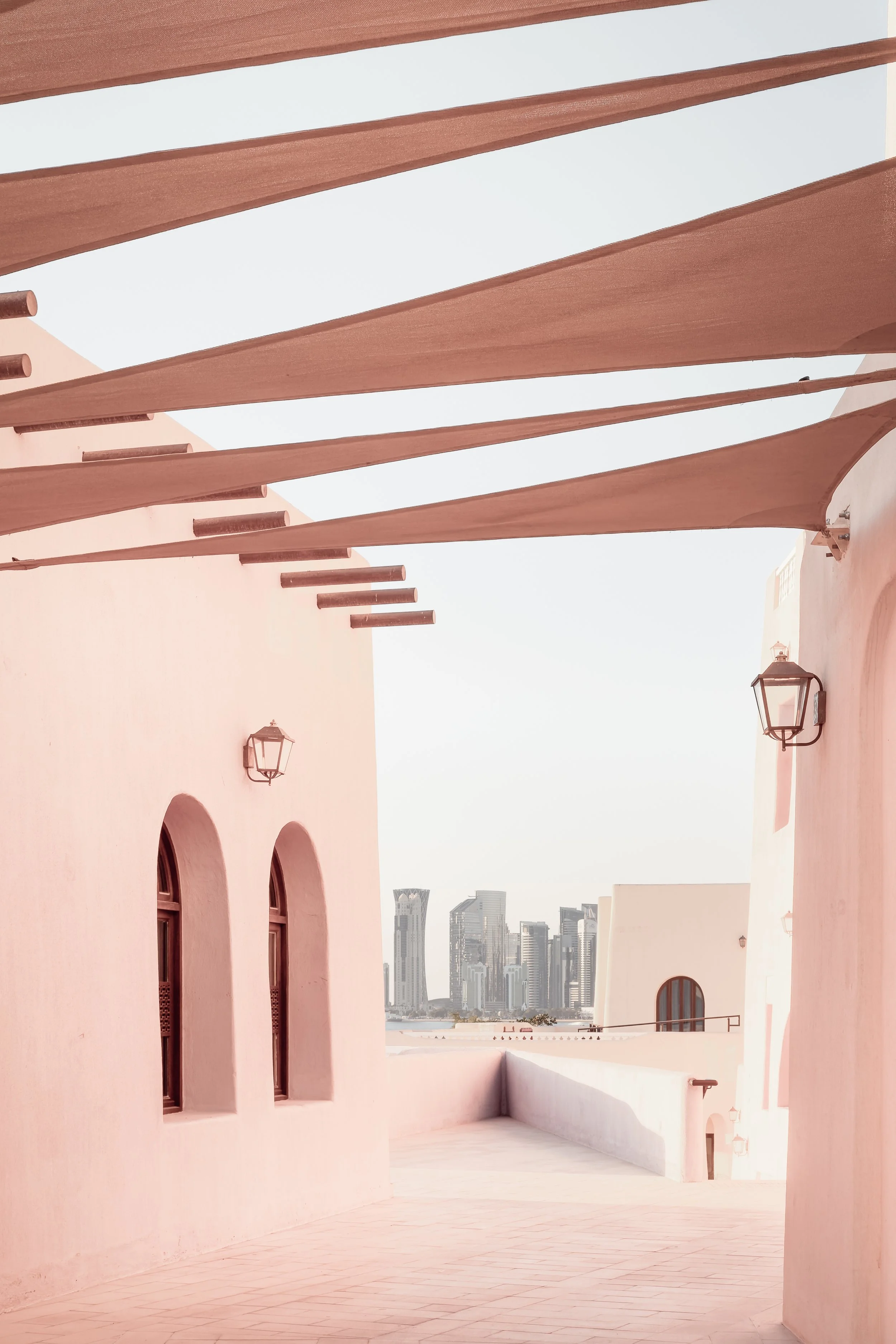Mina District: Pastel Geometry by the Sea
Home > Blog > Case Studies
Pedro Ferr ®
What is Mina District?
Mina District is a waterfront area in Doha designed with clean lines, pastel colors, and human-scale architecture. The district combines residential spaces, boutique shops, and seaside promenades. Its design language blends Qatari building traditions with contemporary minimalism.
Why is Mina District visually distinct?
The district stands out because of its pastel palette: soft pink, lavender, and white façades that shift in tone depending on light and time of day.
Narrow alleys and archways create layered perspectives. Wooden doors and lanterns introduce traditional details within a modern plan. This combination makes the district photogenic and spatially calm.
Evidence
Pastel façades absorb harsh Gulf sunlight better than darker tones, keeping surfaces cooler.
Narrow streets provide shade and direct airflow, echoing the design logic of traditional Qatari villages.
Architectural studies from Qatar University show that lighter hues increase thermal comfort in dense urban areas.
In my own photography sessions at Mina District, I noticed how the soft walls reduced glare compared with brighter or reflective materials, creating a calmer shooting environment.
How does Mina District connect with Doha’s identity?
Doha is a city of contrasts: glass towers, desert edges, Islamic heritage. Mina District adds a new layer. Instead of vertical skylines, it focuses on horizontal living.
Instead of reflective glass, it uses matte textures. For residents and visitors, it offers a slower, walkable experience in a city often defined by speed.
Evidence
Compared with West Bay high-rises, Mina’s low-rise form encourages human interaction at street level.
Tourism reports highlight Mina as part of Qatar’s diversification strategy, promoting cultural districts alongside business hubs.
Walking through Mina with my camera, I saw how its matte textures and slower rhythms contrasted with Doha’s skyline. The shift from glass towers to shaded alleys feels like entering another pace of the city.
What makes Mina District attractive for architects and designers?
Mina District provides a real-world example of color theory in urban planning. It shows how subtle tones influence mood and perception.
For architects, it demonstrates how tradition can be integrated without imitation. For interior designers, it offers inspiration on using light, material, and rhythm to guide human experience.
Another striking example of architecture blending heritage and modern design is the National Museum of Qatar.
Evidence
Color psychology research indicates softer hues reduce visual stress in high-light regions.
UNESCO heritage studies on Gulf settlements emphasize courtyards, shaded streets, and compact massing, all present in Mina.
While photographing, I noticed how light moved across pastel walls throughout the day. For interior designers, this shows how a palette interacts with natural light to define mood and atmosphere.
My notes
When I walked through Mina, I focused on intersections of color and form. A pink wall meeting a violet corridor. A shadow cutting across an arch. A bench waiting under a white façade. Every frame revealed balance between simplicity and intention. These images are not about decoration, but about how architecture sets atmosphere.
Conclusion
Mina District shows how color, form, and tradition create more than scenery. It is an example of how architecture can guide emotion, interaction, and comfort in a coastal city shaped by light.
Photographing it is not only about documenting a place, but about observing how design decisions transform daily experience, which is also central to my work.
If you are an architect, designer, or brand in Qatar looking to document your projects with the same attention to light and geometry, see Services or contact Pedro.










